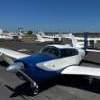Emergency Procedures
-
Members Online
- 1980Mooney
- IvanP
- mooniac58
- 00-Negative
- pirate
- jrwilson
- Crawfish
- Nico1
- Nathan211
- Jarerh
- Cody Stallings
- Jakes Simmons
- William Munney
- Schllc
- N201MKTurbo
- Parker_Woodruff
- CCAS
- Slick Nick
- Bytes
- Sabremech
- Mcstealth
- varlajo
- LANCECASPER
- Hank
- jcovington
- Fly Boomer
- gacoon
- Spensei
- patrickf
- M20Cruiser
- Birdheadevo
- Jim Peace
- natdm
- amillet
- kortopates
- Marc_B
- Flyler
- philiplane
- Larry
- Lax291
- Buckeyechuck
- mluvara


Recommended Posts